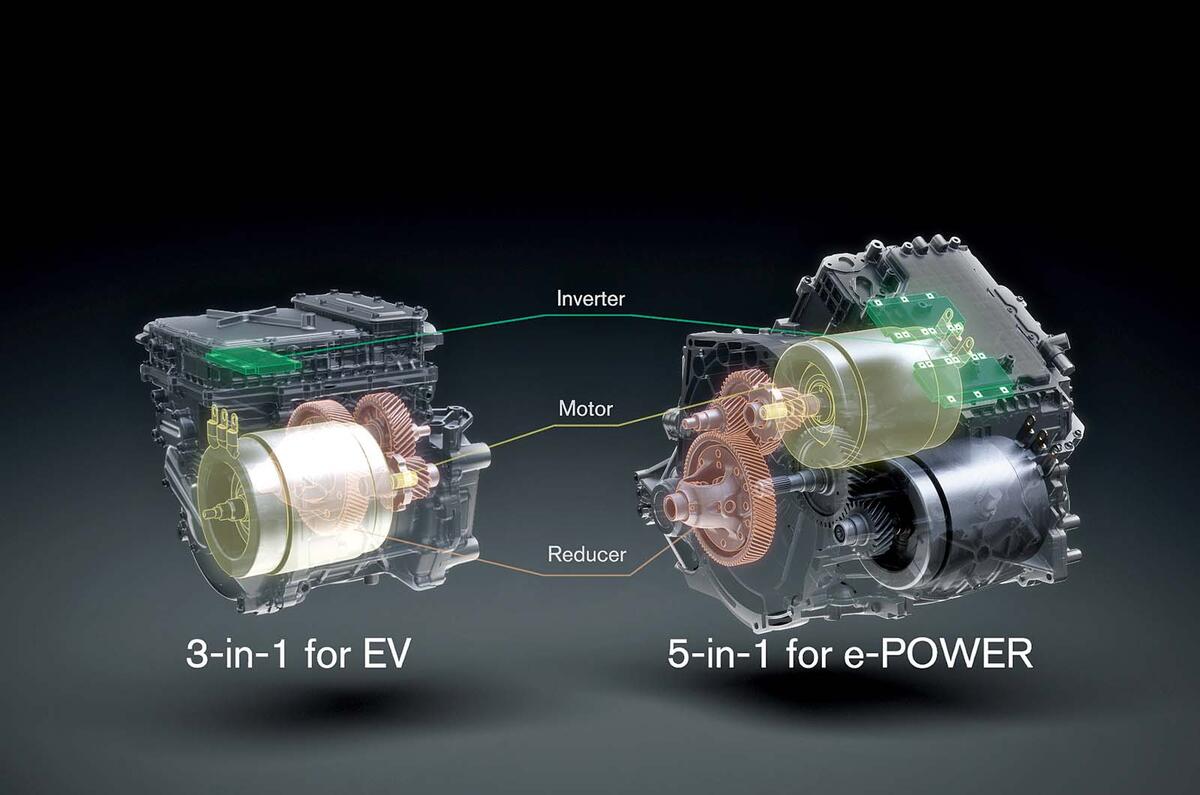Although EV sales are on the up, there’s a yawning price chasm in most cases between them and their ICE counterparts.
So far, some manufacturers have relied on the power of their brand or slick design appeal. But apart from MG, there’s been little evidence of the industry as a whole trying that hard to reach cost parity with conventional models.
Thankfully, that mindset looks to be shifting with news that Renault is physically testing its CMF-B platform with nine mules. It will form the basis of the new Renault 5, which looks fabulous. But, more importantly, the platform is 30% cheaper than the outgoing Zoe to make.
Renault isn’t alone. Nissan announced in March that its new ‘X-in-1’ powertrain packages will reduce driveline costs by 30% by 2026 compared with 2019. It also expects to achieve price parity between its hybrid e-Power models and conventional ICE models by the same date. Parity for EVs will come “eventually”, helped by the introduction of solid-state batteries.
The X-in-1 moniker applies to both Nissan’s e-Power hybrid drivetrains (‘5-in-1’) and EVs (‘3-in-1’). Compared with the original Leaf, integrating the motor and inverter and using direct cooling of electronic components in the inverter has shrunk the package by 25% on current models.
Although e-Power wasn’t launched until 2016, a Leaf-based prototype first ran as early as 2010. Since then, the drivetrains have been steadily improved.
With 3-in-1, the EV motor, inverter and reduction gearbox are combined into one module, making the three components a further 10% more compact. It’s a similar story with the 5-in-1 drives. The latest versions have shrunk by 20% thanks to the same integration but by adding the series-hybrid generator and ‘increaser’ (combustion engine) into the same module, it shaves off a further 10%.
Cost reductions also come from parts sharing across the range of motors, which now use less than 1% of rare-earth elements in the magnets. Engineers achieved this by modifying the shape of the motor’s rotor surface to reduce heat loss.
Previously, it had suppressed the generation of heat by separating the magnets arranged around the rotor. With the modified design, they have been able to integrate magnets closely and this in turn has allowed the reduction in rare-earth materials.
Reducing size involves increasing bangs for buck generally or, in tech speak, improving power density. That includes the inverter, which, apart from merely swapping DC for AC and back again to make DC batteries compatible with AC motors, performs all the control electronics of the drivetrain.
For example, the semi-conductors in the second-generation e-Power inverter are 40% smaller than in the first generation and internal wiring harnesses have been ditched in favour of joining bits and pieces like circuit boards directly together. With X-in-1, the power density will increase even more with the introduction of silicon-carbide chips.




Join the debate
Add your comment
I just started 3 weeks ago and I've gotten 2 check for a total of $15,000...this is the best decision e I made in a long time! "Thank you for giving me this extraordinary opportunity to make extra money from home.go to
this site for more details ........ www.jobsrevenue.com